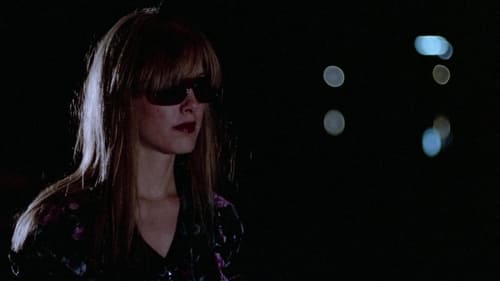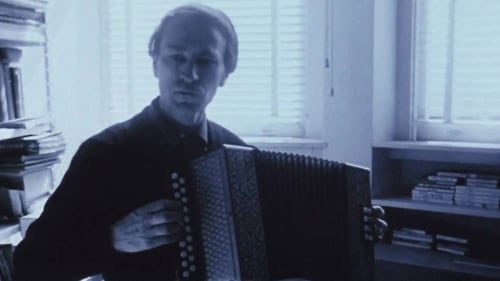Bibbe Hansen
출생 : 1952-01-31,
약력
Bibbe Hansen is an American performance artist, musician and actress.

Self - Artist
A remarkable walk through the life and work of the French artist Marcel Duchamp (1887-1968), one of the most important creators of the 20th century, revolutionary of arts, aesthetics and pop culture.

New York, post 9/11: Armed with a home video camera and no script, the director delves into the private lives of four women artists and transgender activists from the city’s underground subculture, filming their lives over a period of 10 years. Little by little, their testimonies reveal fragments of their pasts, their experiences and their struggles for an identity of their own. A series of revelations transform the viewer from feeling like an intruder to being invested in their destinies.

Executioner
In this retelling of the classic tale, Aladdin is an out of work indie-rock singer living in a video-game-world ruled by a perverted technology-obsessed Sultan.

Takes an in-depth look at the lives and times of the people who hung out with Andy Warhol and "worked" at the Silver Factory during the Sixties, making it all click as a new counter-culture arose and began to exert its influence throughout the arts.

Mrs. Holly
Dr. Vaginal Davis gives what John Water's describes as "phenomenal" and what George Kuchar calls "a riveting" performance as Mrs. Venable, the obsessed, upset mother of the dead sea poet Sebastian. Beset with an en masse visit from her late husband's relatives, which include Mrs. Holly, George Holly as the mercenary son, Katherine Holly as Sebastian's set upon companion, Sister Felicity, the Nurse/Nun of who's performance Ronald Tavel states "another scene stealer using understatement" and Dr. Sugar brought in to "cut that HIDEOUS STORY out of her head" by Mrs. Venable. A psycho-sexual catharsis ensues when Katherine is given sodium pentothal and reveals what really happened SUDDENLY LAST SUMMER!

Eve
From the experience of a transvestite from Los Angeles, the A. shows how race and sexuality are closely intertwined. Through the malleability of the disguised identity, the A. shows an inspired philosophy of Gramsci on the practice considered as subculture field.

The Mother
Nightmares of the past haunt the beautiful, mysterious Olivia, a London resident who begins a passionate affair with American businessman Mike. Trapped in a loveless marriage and traumatized by memories of her mother's brutal murder, Olivia hopes her lover will offer a chance at a new life. However, ghostly voices and brutal murders ignite a fiendish, twist-filled story of double identities, deception, and erotic terror.

Self
“1950년부터 영상 일기를 찍었어요. 언제나 볼렉스 카메라를 들고 다니며, 내가 만나게 되는 상황이나 친구, 뉴욕의 모습, 계절의 변화 등 즉각적인 현실에 반응하고자 했죠. 어떤 날에는 열 프레임, 어떤 날에는 10초, 또 어떤 날에는 10분 정도 촬영을 했습니다. 물론, 아무것도 찍지 않은 날도 있었어요. 일기를 쓸 때는 ‘회상’이라는 절차가 수반되는데, 보통 책상에 앉아서 그날 하루를 되돌아보며 일기를 써 내려가기 때문이죠. 한편 영상(카메라) 일기의 경우, 어떤 순간에 대한 즉각적인 반응을 포착할 수 있습니다. 특정 대상을 카메라에 제대로 담던 담지 못하는 것과 관계없이, 순간의 반응 자체를 카메라가 기록합니다. 어떤 상황에 다시 돌아가 촬영을 재개한다면, 그것은 재연된 영상이 되어버리죠. 이는 사건이나 감정이 수반될 수밖에 없습니다. 일어나는 일을 있는 그대로 포착하려면, 내가 사용하고 있는 도구(여기에서의 도구는 볼렉스 카메라를 말한다)에 대한 온전한 이해가 필수적입니다. 내가 반응을 보이는 현실뿐만 아니라 내가 반응함과 동시에 내 감정의 상태(와 모든 기억)까지 포착할 수 있어야 하기 때문이죠. 다시 말해, 카메라를 들고 촬영이 이루어지는 바로 그 장소에서 영상의 구조화(편집) 작업까지 끝낼 수 있어야 합니다. 월든에서 여러분이 만나는 모든 영상은 카메라에 담겨있는 영상과 동일합니다. 1964년부터 1968년까지 촬영한 영상을 순차적으로 연결한 것입니다. 사운드트랙의 경우, 목소리, 지하철 소리, 길거리 소음 등 촬영 당시 수집한 사운드에 쇼팽의 음악-난 로맨틱한 사람입니다-과 때때로 의미 있고 또 때때로 의미 없는 사운드를 섞어 제작하였습니다.”

Self
The films were made between 1964 and 1966 at Warhol's Factory studio in New York City. Subjects were captured in stark relief by a strong key light, and filmed by Warhol with his stationary 16mm Bolex camera on silent, black and white, 100-foot rolls of film at 24 frames per second. The resulting two-and-a-half-minute film reels were then screened in 'slow motion' at 16 frames per second.

The film begins with a close-up of a table in a restaurant covered with a checkered cloth, in a composition that strongly suggests a still life. It lingers there for a long time before beginning a slow outward zoom. All the while we overhear poorly recorded snippets of conversation. We see hands move in and out of the frame, lifting glasses and tapping cigarettes. We recognise Edie Sedgwick by her signature dancer's tights and jewellery. The group discuss a recent trip to Tangier; the conversation returns frequently to past and upcoming travel. At one point, a whole, uncut pineapple is delivered to their table, despite the fact that they are in an Italian restaurant: it is not meant to be eaten, but to evoke the possibility of adventure in exotic, semi-imaginary lands.

Bibbe Hansen
Screen Test of Bibbe Hansen at age 15.

Inspired by Bibbe Hansen's experiences in a juvenile detention center.









